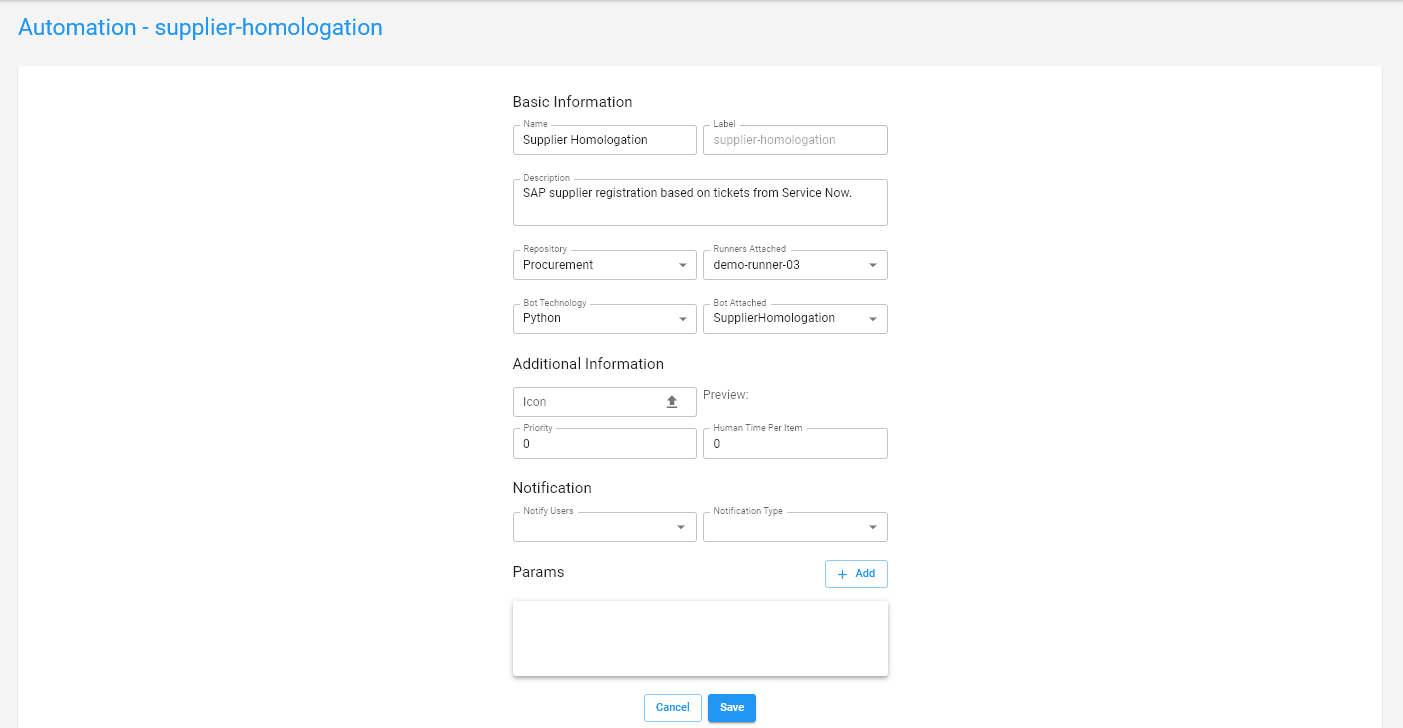Automations
Go to AutomationsOver the following sections you will find information about how to create and manage automations.
Anatomy of an Automation¶
An automation is one of the most important element from BotCity Maestro just behind Tasks.
They are responsible for linking together agents, which are the bots or software to be executed, with Runners, which are the BotCity Runner instances in which the agents will be executed when processing the tasks.
Tasks are instances of an Automation that are created by the user via the Maestro User Interface, BotCity CLI, Maestro SDK or the Maestro API.
An Automation is defined by the following elements:
- Label: the unique identifier of the automation.
- Name: the user-friendly name of the automation.
- Description: a short description of the automation.
- Human Time Per Item: the estimated time (in minutes) that a human would take to complete a task of this automation.
- Technology: technology or programming language used in automation
- Agent Attached: the agent/bot associated with this automation.
- Runners Attached: list of runners associated with this automation. If more than one runner is attached, the task will be distributed to the first free BotCity Runner that is online and available.
- Notify Users: the list of users to be notified when alert notifications of a given type happens.
- Notification Type: the types of alert notification for which to notify users.
- Icon: a small icon that represents the automation that will be displayed in the Maestro User Interface.
- Priority: the execution priority of this process.
- Parameters: a list of parameters that will be used by the Agent Attached.
Important
The users selected in the Notify Users field will receive an email notification every time the automation triggers an alert via code.
See more details about the Alerts functionality of the Orchestrator.
CRON Scheduling¶
This topic was moved to the Schedules section.
Parameters¶
Automations can be parametrized for greater flexibility and more dynamic code.
Parameters are defined in the Parameters section of the automation when creating or editing it.
Parameters are defined by a Label and a Type. The Label is the unique identifier of the parameter and the Type is the data type of the parameter.
Currently the following types of parameters are supported:
- Text
- Integer
- Double
- Date
You can also define if this parameter will have a default value and also if it is a required parameter. Learn how to create and access Parameters.
The Type will also determine how the parameter will be displayed in the Maestro New Tasks interface.
Creating an Automation¶
Important
In order to create an Automation there are some requirements that must be met:
- Make sure you have a Runner registered. See more at the Runners section.
- Make sure you have a Bot or Agent deployed and released. See more at the bot deploy section.
Create a new Automation by clicking on the New Automation button in the top right corner.
Fill in the form with the required information and click on Create.
Here is an example of how to create an Automation:
Warning! Your code is not reporting any items processed
If you see a warning regarding the reporting of processed items, this means that your automation code is not yet reporting data to the platform.
Using this feature in your automation process allows you to have information about the items processed successfully or failed by each task executed.
See more details about this feature by accessing the BotCity Maestro SDK documentation.
Important
This feature is part of the BotCity Insights, which is a module dedicated to reporting and displaying data related to your RPA initiative.
See more details about this module by accessing the BotCity Insights documentation.

